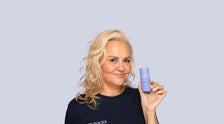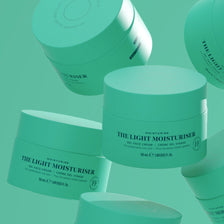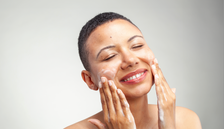
Following on from this Instagram Live earlier this evening, as promised, please see an extended version of Kirsten’s original post in the Skin Professionals UK Facebook group below:
As a Skin Professionals UK group expert, I was asked to explain to newbies/non- professionals, why it is detrimental to use home microneedling devices, particularly rollers, 3 x per week, to a depth of 0.5mm, on unprepped skin as is currently being recommended by a brand in the marketplace.
Firstly, some basic skin science….
The skin doesn’t know the difference between being grazed, burnt, cut or being microneedled; as soon as it’s injured the inflammatory cascade is initiated and the healing/ knitting back of the skin begins.
The whole point of microneedling is to instigate CONTROLLED skin wounding.
CONTROLLED wounding, as opposed to UNCONTROLLED, sets off a CONTROLLED INFLAMMATORY RESPONSE which ultimately kick starts lazy fibroblast cells without trauma.
Fibroblast cells produce collagen, elastin and hyaluronic acid.
UNCONTROLLED wounding will set off UNCONTROLLED INFLAMMATORY responses which are detrimental to skin health and appearance.
For example, CONTROLLED wounding is fantastic for melanin rich, darker skin tones but UNCONTROLLED wounding of melanin rich skins can lead to keloid scarring as the skin tends to over heal itself by producing too much collagen.
We all want to look younger for longer, preferably without the aid of injectables or surgery so, if carried out CORRECTLY, microneedling is the perfect regenerative treatment.
Why do we need to kick start the fibroblasts?
The fibroblasts stop proactively making elastin when we’re 25. Elastin is a protein that gives our skin elasticity. Think of the stretch in a rubber band.
The fibroblasts stop proactively making collagen when we’re 35 but we actually lose 1.5% of it every year from the age of 21!
We have many types of collagen throughout the body and within the skin structure. They all do various jobs but with needling we’re mainly concerned with cultivating lots of healthy Type I.
Collagen Type I starts out as baby bundles of Type III. We need to nurture Type III by feeding it with daily antioxidants and SPF to ensure it remodels into strong and mighty Type I – this acts like internal scaffolding and pushes the skin structure up, ironing out the wrinkles.
Hyaluronic acid production depletes as we age; it’s associated with oestrogen levels so by the time we’re post-menopausal reserves are extremely low.
HA is a gel-like, spongey substance that can potentially hold up to 1000 x its own weight in water.
Without an abundance of HA for hydration our collagen and elastin loses its suppleness and our skin lacks volume.
The epidermis consists of 80% of keratinocyte cells interspersed with 20% melanocyte, Langerhans and stem cells. It measures approximately 0.5mm. Imagine the protective brickwork of a house but only as thick as a sheet of paper, thus it requires TLC.
These cells begin their journey at the basal layer and over approximately 28 days they travel to the surface where they are programmed to die and slough off. Our stem cells are going nowhere so however old we get; we will always produce new keratinocytes.
Just before they slough off, they become ‘corneocyte’ cells. Don’t be fooled though; they play a vital and integral role in the ‘barrier function’ (protection and hydration) of our skin thus we don’t want to prematurely lose them.
The dermis is deeper than the epidermis; depending on what area of the body it is and the age of the person. On average, it is about 1.2mm thick on the face.
The dermis is made up of the fibroblasts, said collagen (mainly type I) and elastin proteins suspended in HA (& other glycosaminoglycans) plus a capillary network. We refer to this as the Extra Cellular Matrix. When we’re young, it’s plump and bouncy; responsible for giving our skin its thickness and volume.
The epidermis and dermis are attached by the ‘dermal/epidermal junction’; anchored, adhered and connected together with collagen types IV, VII & XVII…
These are the types affected by photoageing as they’re closest to the sun.
After 20 years of case studies by the pioneers of medical microneedling, we unequivocally know that for GENERAL collagen regeneration PLUS improvements in pigmentation/lower grades of acne/open pores/sebum regulation (yes it can help all of those too) we should ONLY be needling to the basal cells of the epidermis (.5mm).
In the early days of needling, aesthetic doctors believed that the fibroblasts needed to be directly targeted. As you can imagine this was painful without numbing cream and very bloody, therefore requiring ’downtime.’
More importantly, this far-from-controlled-trauma, caused more harm than good in the long term. It took about 9 months for the excessive trauma to show up as lumps such as granulomas and fibrosis, which is why it took so long for professional guidance to change; they just didn’t realise that the needling was responsible for the damage caused.
We know so much more about the skin than we did 20, 15, even 5 years ago. We now understand that all the different cells talk to each other in something we refer to as ‘intercellular communication.’ We also understand the relevance of stimulating ‘epidermal growth factors’ (signalling proteins.)
Thus, if we stimulate the cells and Growth Factors of the epidermis in a CONTROLLED manner they will communicate with the fibroblasts in the dermis without causing excessive trauma and pain.
As OFQUAL regulated level 4 non-medic skin therapists, we are only allowed to needle up to 1mm on the face (doctors can go deeper), but we certainly would only needle this deeply if we were working on scar revision or particularly deep static wrinkles. This is not, by any stretch of the imagination, normal salon practise.
Although we can needle to 1mm, the face varies massively in thickness.
There are varying differentials of the upper lip, cheeks, forehead, neck and eye area. Some areas are as thin as 0.2-0.3mm, so needling the entire face at 0.5mm is going to cause an UNCONTROLLED wound.
The frequency of needling depends on a few factors but for general regenerative treatments we should be guided by age. It’s not an open market.
When we’re young our skin cell turnover/healing time takes about 28 days, as we age it slows down to 40-60 days. Thus, the average time in-between treatments should be, on average 4 weeks. If I’m doing an older client, I’m probably going to make that 6- 8 weeks.
There is no occasion where we would recommend needling 3 x a week. Especially to a depth of 0.5mm.
Needling 3 times in one week to a depth of 0.5mm means:
- The Merkel cells and free nerve endings of the epidermis and potentially the sensory nerve endings of the dermis will be on continual high alert leading to sensitivity and reactivity to products and temperature. It’s also going to feel sore. = UNCONTROLLED.
- Due to the excessive amounts of histamine being produced, your skin will remain inflamed. Redness and swelling will be visible for longer and inflammation inevitably leads to Post Inflammatory Hyperpigmentation, and nobody wants that. = UNCONTROLLED.
- White blood cells and an over production of enzymes such as collagenase and elastase that are responsible for cleaning up damaged tissue ‘pac-man style’ will be overzealous and chomp on healthy tissue too. = UNCONTROLLED!
- Re-epithelialisation (resurfacing of a wound) will be continually disturbed; the initial wounding will NEVER heal and actually CAUSE ‘free radical damage’ thus the degradation of healthy cells; the exact opposite of a regenerative treatment. Your skin is going to feel continually dry and tight, and Collagen type III remodelling won’t happen as it should. = UNCONTROLLED!
- Barrier function will be impaired. This particularly affects the microbiome that protects us from invading pathogens, thus there’s a good chance of bacterial, viral or fungal infection, especially with potentially dirty needles. In clinic we use individual, one-use, sealed, sterile cartridges and keep documentation relating to the batch number. We NEVER use a cartridge on a client more than once (let alone 24 times as is being suggested by the brand in question retailing the at-home device).
It is impossible to sterilise a device with bodily fluid on it with a quick spray of alcohol. Just because it’s your bacteria doesn’t matter (and God forbid that someone else in your household ‘borrows’ it). = UNCONTROLLED. - The skin will be ultra-prone to UV sensitivity so you can expect to burn more easily. If you’re on hormone contraception or HRT, expect melasma to suddenly appear or worsen. To make matters worse, your poor inflamed skin will be too sensitive to apply even a physical SPF. = UNCONTROLLED!
So what’s wrong with a derma roller?
Just as our skin science knowledge has evolved, so have microneedling devices. We rarely use rollers professionally because they roll laterally and can tear/damage the skin, especially if you use too much pressure, and with a longer-than-advised needle. Now imagine it in the hands of an untrained consumer, using it 3 x a week, for 24 uses.
Why do I need to prep my skin?
It’s vital that your skin’s barrier is ready for needling. Professionally recommended products are essential not only pre-treatment but post-treatment.
Collagen remodelling requires antioxidants such as vitamin C and retinoids to make it happen, but just to complicate matters, one shouldn’t be using retinoids within 5 days pre and post needling due to sensitivity. Professional guidance is imperative.
The importance of visiting a professional aesthetic practitioner cannot be overstated. Someone qualified, quantified and insured who uses medical grade devices that are CE marked and FDA cleared within a clinical environment including a sharps box and a hazardous waste removal contract.
Contraindications
Before any regenerative treatment we must carry out a detailed consultation and health questionnaire to ensure your body is capable of healing. If, for example, you’re diabetic or have any autoimmune conditions (to name but two), your body’s response to needling may be slower, therefore ruling you out of having the treatment.
Hygiene is imperative.
We cleanse, peel, then DISINFECT the skin whilst wearing disposable gloves. This ensures the surface of the skin is as clean as possible before creating over a million needle penetrations.
When we finish needling, we apply a sterile saline solution/gauze mask to cool and hydrate the skin, which by now feels a bit like mild sunburn, before going under an LED light to speed up healing. We then put on fresh gloves to apply a bespoke sterile mesotherapy cream and SPF 50.
Cost
We recognise that professional needling doesn’t come cheap. It costs the practitioner approximately £50.00 in disposables alone to perform one treatment. We totally understand how in the current economic climate home needling sounds appealing. Please resist the marketing hype and think twice. You cannot ‘bring the Clinic into your home’, no matter what anyone says.
This is one treatment that needs to stay in-clinic.
If you cannot afford a professional needling treatment, try daily 20-minute-deep massages instead as this also stimulates the fibroblasts. It is clinically proven and if you’re having a course of professional microneedling ensure you’re massaging daily to further improve your results.
Please support or become a qualified level 4 professional skin therapist if you want to achieve the truly incredible results microneedling can provide when carried out in a CONTROLLED, educated manner in a CONTROLLED environment.
It is anticipated that the forthcoming regulation of the aesthetic industry will change the laws around the providing of microneedling treatments without the proper qualifications. Currently, there is no such impending regulation for those that sell devices to the untrained public.
Kirsten Steward
https://instagram.com/kirstenstewardbeautyaesthetics
https://www.instagram.com/kirstenstewardnailsbeauty/
Further reading




























